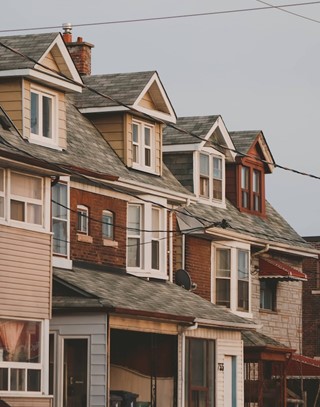Bradley Ransome is a real estate developer and investor in the Raleigh, NC area. With experience in buying, selling, and flipping homes, Ransome’s family business purchases undeveloped land, single family and multi-family units that could use a little TLC. After renovation, these various renovated or newly constructed homes are then sold or rented. In the following article, Brad Ransome discusses post-pandemic real estate, problems that have affected the market, and investment strategies for this “new normal”.
Since the start of the COVID-19 pandemic, pundits, politicians, and analysts alike have referred to a “new normal” that sat just beyond the horizon. Now, with lockdowns over and cases at two-year lows, it seems that we’ve finally entered into that period. Yet the so-called “new normal” doesn’t seem to be very sunny, especially for investors and developers in the real estate market. To overcome current setbacks, investors must prepare now.
Bradley Ransome says that with major supply-chain issues, labor shortages, rising interest rates, and a general lack of available housing, it seems that real estate is headed toward a bear market. Yet, by recognizing that young people now wish to return to urban centers and by shifting to local fix-and-flip tactics, developers and investors can ride out the storm without losing their stake.
Problems Affecting the Current Real Estate Market
Brad Ransome says that despite rapidly rising housing prices, the real estate market is reckoning with a host of issues created by the COVID-19 pandemic and roughly a decade of underbuilding new homes. Even two years after the first lockdowns, the world is still working to overcome lingering supply chain issues.
In the U.S., the lumber industry has been particularly hard hit. Brad Ransome explains that the price of lumber has more than tripled since last April, as builders have struggled to keep up with demand. The price of other building materials, such as copper and steel, has also increased. The end result is that the cost of building a new home has risen about 10.9% in the last year.
The pandemic has also exacerbated a long-running issue in the U.S.—a lack of available workers in construction says Bradley Ransome. The industry was already facing labor shortages before the pandemic, as many older workers left during the Great Recession, and few younger people replaced them. The pandemic then forced many construction workers to leave or take jobs in other sectors, as the industry was deemed non-essential during lockdowns.
As a result of these trends, the production of new homes has lagged behind demand, leading to rising prices and a lack of available housing. In addition, the end of the pandemic has also brought an end to the era of rock-bottom interest rates. Following months of ballooning inflation, the Federal Reserve has begun hiking rates, leading many potential buyers to rethink their search for financial lending says Bradley Ransome.
Investment Strategies for the Post-Pandemic Market
Despite the many challenges currently facing the real estate market, there are still a few opportunities for developers and investors to make a profit according to Brad Ransome. One trend that is working in favor of investors is the desire of the younger generation to move back to urban centers.

Buying Up and Renting Out Urban Properties
The pandemic caused many people to flee cities for the suburbs, but now that the pandemic is winding down, studies show people are moving back to cities in droves says Bradley Ransome. This is especially true for young generations, who are attracted to the amenities and opportunities that cities offer.
Brad Ransome says that this trend presents an opportunity for investors and developers to buy properties in cities and either rent them out or flip and sell. Wall Street firms have already started expanding into this market and now represent a major sector of the rental field. And, due to the high demand for housing in cities, investors can expect to see a healthy return on their initial stakes explains Brad Ransome.
Flipping Old Houses
Another strategy is to focus on local fix-and-flip opportunities says Bradley Ransome. The pandemic created a boom in the fix-and-flip market, as non-essential workers realized that they could restore homes left abandoned over the past few years at a time when their prior jobs were no longer viable.
Brad Ransome says that this trend is expected to continue in the post-pandemic era, unfortunately for some homeowners, with rising costs and job loss, this leads to foreclosed properties. For investors, though, these foreclosed properties are opportunities.
Local fix-and-flip opportunities are especially attractive because they allow investors to avoid the challenges of the construction industry. By working with local contractors and suppliers, future investors can ensure that their projects are completed on time and on budget.
Final Thoughts
The COVID-19 pandemic has created a number of challenges for the real estate market, but there are still opportunities for investors and developers to make a profit. By focusing on local fix-and-flip opportunities and investing in properties in urban areas, investors can weather the current market conditions and come out ahead in the long run. However, to be successful, preparations must start now.










